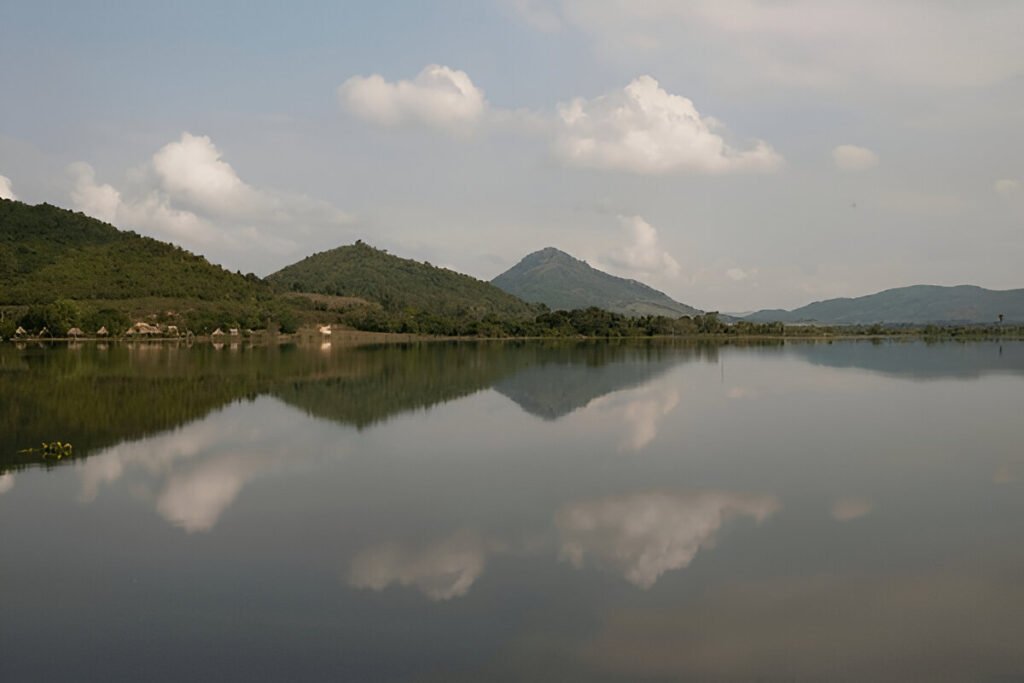Introduction:
The Big Wild Goose Pagoda, located in the bustling city of Xi’an, China, is an iconic monument that showcases the glorious past of the Tang Dynasty. A marvel of ancient architecture, it is a must-see destination for anyone interested in Chinese history, culture, and in particular, the influence of Buddhism within the Tang Dynasty. The Pagoda stands as a testament to the profound significance of Buddhism during that era and continues to inspire millions of tourists and pilgrims today with its powerful cultural resonance.
Exploring the Grandeur of Big Wild Goose Pagoda: A Symbol of Tang Dynasty’s Glory
The Big Wild Goose Pagoda is a magnificent piece of architecture that captures the spirit of the Tang Dynasty in its imposing stature and intricate designs. Constructed in 652 AD during the reign of Emperor Gaozong, it was initially built to store Buddhist scriptures brought back from India by the famous Chinese monk Xuanzang. The seven-story structure is an aesthetic blend of traditional Chinese and Buddhist architectural styles, and it stands as a captivating testament to the rich cultural heritage of the Tang Dynasty.
Encircled by a beautiful square teeming with lush greenery and stunning water fountains, the Pagoda offers a spectacular view of the city from its top, which one can reach by climbing a series of wooden stairs. Its timeless beauty and grandeur, coupled with the peaceful ambiance, make the Big Wild Goose Pagoda an unforgettable experience. The nighttime view, with the Pagoda illuminated against the night sky, is a sight to behold, reflecting the enduring glory of the Tang Dynasty in every golden beam of light.
The Profound Influence of Buddhism on Tang Dynasty Exemplified by Big Wild Goose Pagoda
The Big Wild Goose Pagoda is not only an architectural marvel but also a symbol of the profound influence of Buddhism during the Tang Dynasty. This era is regarded as the golden age of Buddhism in China, and the Pagoda serves as a physical manifestation of this religious and cultural milestone. The historic importance of the Pagoda is further highlighted by the fact that it was a hub for translation of Buddhist scriptures, making it a vital center for spreading Buddhist teachings across China.
The Pagoda has also been instrumental in perpetuating the Buddhist culture, with its expansive grounds regularly hosting Buddhist-themed events and ceremonies. For instance, the Tang Paradise, located near the Pagoda, showcases the history and culture of the Tang Dynasty through various performances, including Buddhist music and dance shows. Thus, the Pagoda continues to be a beacon of Buddhist influence and the glory of the Tang Dynasty, attracting scholars, enthusiasts, and tourists from around the world.
Description of the Attraction:
The Big Wild Goose Pagoda is a towering structure of 64 meters, with seven stories, each adorned with intricate carvings and designs. The Pagoda’s classic simplicity and elegance are enhanced by the surrounding Da Ci’en Temple complex, which is home to several ancient structures and artifacts, including the Bell and Drum Towers, the Hall of Mahavira, and numerous Buddhist sculptures.
Its serene ambiance, coupled with the profound sense of history and culture, makes it a unique attraction. The heart of the Pagoda is its scripture chamber, where the sacred Buddhist texts brought back by Xuanzang from India are stored. The grandeur and peace of the Pagoda inspire awe and reverence in its visitors, making it a standout destination in Xi’an.
Things to Do:
Visitors can explore the Pagoda’s stunning architecture, climb up the wooden stairs for a panoramic view of Xi’an, and absorb the tranquil ambiance of the temple complex. They can also attend the daily chanting ceremonies, explore the rich collection of Buddhist scriptures, and participate in the colorful Buddhist festivals. The nearby Tang Paradise park offers a range of cultural performances that transport visitors back to the grandeur of the Tang Dynasty.
Local Tips:
The best time to visit the Pagoda is in spring and autumn when the weather is pleasant. Visitors should remember to dress modestly, respecting the sanctity of the temple complex. Knowing a few basic phrases in Mandarin can enhance the communication with locals.
How to Get There:
The Pagoda can be easily reached by bus, subway, or taxi from downtown Xi’an. It is around 40 minutes’ drive from Xi’an Xianyang International Airport, and it’s also accessible from the Xi’an Railway Station by subway line 2.
Nearby Attractions:
Nearby attractions include the Shaanxi History Museum, the Qujiang Pool Ruins Park, and the City Wall of Xi’an, all of which offer a glimpse into China’s rich historical and cultural heritage.
Conclusion:
The Big Wild Goose Pagoda is more than just an architectural marvel; it is a symbol of the profound cultural and religious influence of the Tang Dynasty. Its serene ambiance, historic significance, and captivating grandeur make it a must-visit destination in Xi’an. Whether you’re a history enthusiast, a culture vulture, or a spiritual seeker, the Big Wild Goose Pagoda promises an unforgettable journey into the heart of the Tang Dynasty’s glory.






